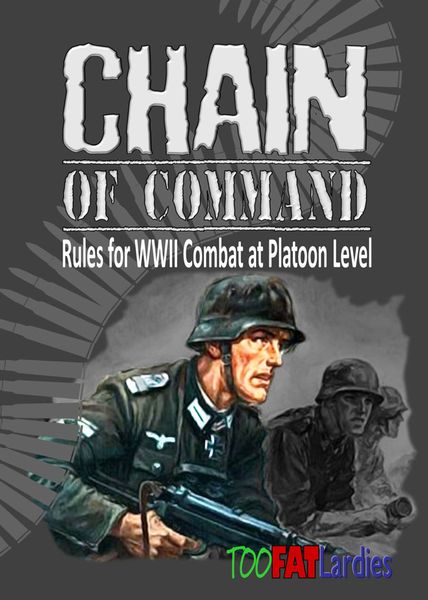Chain of Command (2013) Board Game
Chain of Command is a World War II themed wargame that was released in 2013 by Too Fat Lardies, known for their innovative and detailed historical miniatures games. The game focuses on small unit tactics and emphasizes realistic combat situations in the context of historical battles.
Game Components of Chain of Command
How To Setup Chain of Command
Setup begins with the **Patrol Phase**, where players move patrol markers to scout the terrain and enemy positions. Each player has 3 or 4 patrol markers, which must be moved within 12 inches of each other. When a marker comes within 12 inches of an enemy marker, both are locked down, and this process continues until one side’s markers are all locked. Once locked, players determine their **Jump-Off Points**, which must be at least 6 inches away from the closest enemy markers and in cover. If cover is not available, these points are placed at the table’s edge.
Gameplay Mechanics and Game Objective
– 1: Activate a team.
– 2: Activate a squad or section.
– 3: Activate a junior leader.
– 4: Activate a senior leader.
– 5: Gain a Chain of Command point.
– 6: Alter phase sequence or end the turn.
Player Experience
Chain of Command offers a dynamic and unpredictable game experience due to its randomized command dice system. This mechanic simulates the friction and unpredictability of real-world combat, where simple orders can become complicated. The game requires strategic planning and adaptability, as players must navigate the unpredictability of dice rolls to execute their tactics. The Patrol Phase adds a layer of strategy, as positioning Jump-Off Points can significantly impact the game’s outcome.
Pros
Cons
Personal Thoughts on Chain of Command
Chain of Command is ideal for wargamers who enjoy tactical, platoon-level combat and are looking for a game that simulates the complexities and unpredictabilities of real-world warfare. It is particularly suited for those who appreciate historical accuracy and the flexibility to adapt the game to different settings. However, it may not be the best fit for players who prefer more deterministic gameplay or are new to miniatures wargaming due to the initial investment in miniatures and the learning curve of some advanced mechanics.
We are supported by our audience. When you purchase through links on our site, we may earn an affiliate commission, at no extra cost for you. Learn more.

